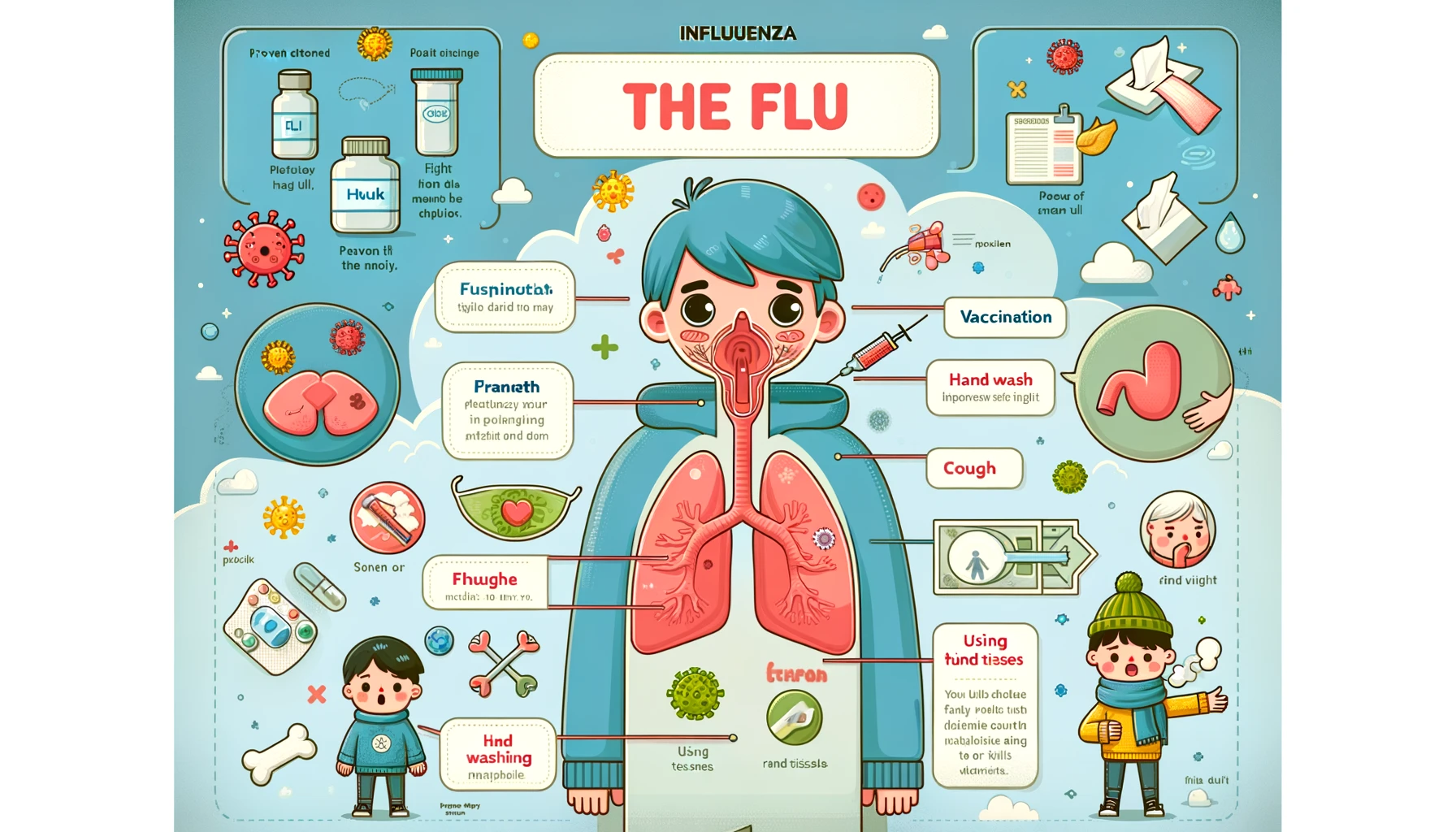Understanding the Flu: Causes and Symptoms
Understanding the Flu: Causes and Symptoms
Table of Contents
- Introduction to the Flu
- Causes of the Flu
- Influenza Viruses
- Transmission Methods
- Symptoms of the Flu
- Early Symptoms
- Severe Symptoms
- Risk Factors for the Flu
- Complications of the Flu
- Diagnosis and Treatment
- Prevention Strategies
- Conclusion
- References
Understanding the Flu: Causes and Symptoms
Introduction to the Flu The flu, or influenza, is a highly contagious respiratory illness caused by influenza viruses. It can cause mild to severe illness and, in some cases, can lead to death. Understanding the flu’s causes and symptoms is essential for effective prevention and treatment. This article explores how the flu spreads, its symptoms, and ways to manage and prevent this common illness.
Causes of the Flu The flu is caused by influenza viruses, which infect the nose, throat, and sometimes the lungs. Understanding the causes helps in taking appropriate preventive measures.
Influenza Viruses
There are three main types of influenza viruses: A, B, and C. Types A and B are the most common and cause seasonal flu epidemics.
- Influenza A: This type is divided into subtypes based on two proteins on the virus’s surface, hemagglutinin (H) and neuraminidase (N). Examples include H1N1 and H3N2.
- Influenza B: This type is not divided into subtypes but can be classified into lineages such as B/Yamagata and B/Victoria.
- Influenza C: This type causes mild respiratory illness and is not associated with epidemics.
Transmission Methods
The flu spreads primarily through respiratory droplets when an infected person coughs, sneezes, or talks. It can also spread by touching a surface or object contaminated with the virus and then touching the mouth, nose, or eyes.
- Person-to-Person Contact: Close contact with an infected individual can facilitate the spread of the virus.
- Contaminated Surfaces: Flu viruses can survive on surfaces for several hours, making it possible to contract the flu by touching contaminated surfaces.
Symptoms of the Flu The symptoms of the flu can range from mild to severe and typically appear suddenly.
Early Symptoms
Early symptoms of the flu may include:
- Fever: A high fever, often above 100°F (37.8°C).
- Chills: Feeling cold and shivering.
- Muscle Aches: Pain and stiffness in the muscles, especially in the back, arms, and legs.
- Fatigue: Extreme tiredness and weakness.
Severe Symptoms
As the flu progresses, more severe symptoms may develop:
- Cough: A persistent, dry cough.
- Sore Throat: Pain or scratchiness in the throat.
- Runny or Stuffy Nose: Nasal congestion and discharge.
- Headache: A throbbing or persistent headache.
- Shortness of Breath: Difficulty breathing, especially in severe cases.
Risk Factors for the Flu Certain factors increase the risk of contracting the flu and experiencing severe symptoms:
- Age: Young children and older adults are more vulnerable.
- Chronic Conditions: Individuals with chronic illnesses such as asthma, diabetes, or heart disease are at higher risk.
- Weakened Immune System: Those with weakened immune systems, such as people with HIV/AIDS or those undergoing chemotherapy.
- Pregnancy: Pregnant women are more susceptible to severe flu-related complications.
- Living Conditions: People living in close quarters, such as nursing homes or dormitories, are at higher risk.
Complications of the Flu The flu can lead to several complications, especially in high-risk individuals:
- Pneumonia: A serious infection of the lungs.
- Bronchitis: Inflammation of the bronchial tubes.
- Sinus and Ear Infections: Secondary infections can occur.
- Worsening of Chronic Conditions: The flu can exacerbate chronic health issues such as asthma and heart disease.
Diagnosis and Treatment Diagnosing the flu involves a combination of clinical evaluation and, sometimes, laboratory testing.
- Clinical Evaluation: Based on symptoms and physical examination.
- Rapid Influenza Diagnostic Tests (RIDTs): Can provide results in 15-30 minutes but are less accurate.
- Polymerase Chain Reaction (PCR) Tests: More accurate tests that detect the virus’s genetic material.
Treatment
Treatment focuses on relieving symptoms and preventing complications:
- Antiviral Medications: Prescription antiviral drugs like oseltamivir (Tamiflu) and zanamivir (Relenza) can reduce the severity and duration of symptoms if taken within 48 hours of symptom onset.
- Over-the-Counter Medications: Pain relievers, decongestants, and antihistamines can help alleviate symptoms.
- Rest and Hydration: Adequate rest and fluid intake are crucial for recovery.
Prevention Strategies Preventing the flu involves several key strategies:
- Vaccination: The annual flu vaccine is the most effective way to prevent the flu. It is recommended for everyone aged six months and older.
- Good Hygiene Practices: Regular handwashing with soap and water, using hand sanitizers, and avoiding touching the face can reduce the risk of infection.
- Avoiding Close Contact: Staying away from infected individuals and avoiding large gatherings during flu season.
- Cleaning and Disinfecting: Regularly cleaning and disinfecting frequently-touched surfaces.
Conclusion Understanding the flu’s causes and symptoms is essential for effective prevention and treatment. By recognizing the signs early and implementing preventive measures such as vaccination and good hygiene practices, individuals can reduce their risk of contracting the flu and manage symptoms more effectively if they do become infected.
<ⓒ WizardMedics (wizardmedics.com)>







